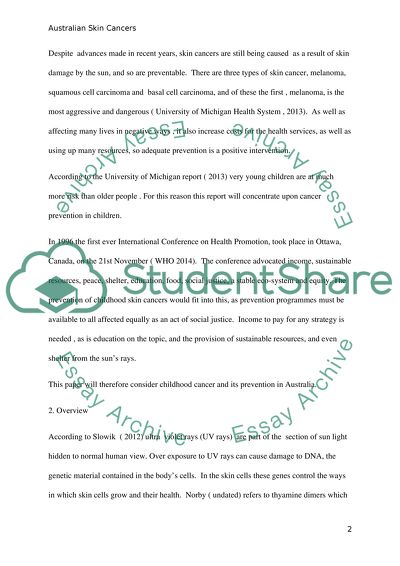Cite this document
(“Skin cancer is an important health issue in Australia and is connected Research Paper”, n.d.)
Retrieved from https://studentshare.org/health-sciences-medicine/1642377-skin-cancer-is-an-important-health-issue-in-australia-and-is-connected-to-the-national-health-priority-area-cancer-control
Retrieved from https://studentshare.org/health-sciences-medicine/1642377-skin-cancer-is-an-important-health-issue-in-australia-and-is-connected-to-the-national-health-priority-area-cancer-control
(Skin Cancer Is an Important Health Issue in Australia and Is Connected Research Paper)
https://studentshare.org/health-sciences-medicine/1642377-skin-cancer-is-an-important-health-issue-in-australia-and-is-connected-to-the-national-health-priority-area-cancer-control.
https://studentshare.org/health-sciences-medicine/1642377-skin-cancer-is-an-important-health-issue-in-australia-and-is-connected-to-the-national-health-priority-area-cancer-control.
“Skin Cancer Is an Important Health Issue in Australia and Is Connected Research Paper”, n.d. https://studentshare.org/health-sciences-medicine/1642377-skin-cancer-is-an-important-health-issue-in-australia-and-is-connected-to-the-national-health-priority-area-cancer-control.


